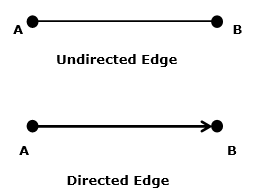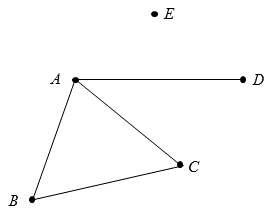Graph Theroy Fundamental ConceptsSome of the basic fundamental concepts of graph theory are: 1. PointA point is a particular position that is located in a space. Space can be one-dimensional, two-dimensional or three-dimensional space. A dot is used to represent a point in graph and it is labeled by alphabet, numbers or alphanumeric values. Example
Here, dot is a point labeled by 'p'. 2. LineTwo points are connected to each other through a line. A line is a connection between two points. It is represented by a solid line. Example
Here, 'A' and 'B' are the points and links between two points is called a line. 3. VertexA vertex is a synonym of point in graph i.e. one of the points on which the graph is defined and which may be connected by lines/edges is called a vertex. Vertex is also called "node", "point" or "junction". A vertex is denoted by alphabets, numbers or alphanumeric value. Example
Here, point is the vertex labeled with an alphabet 'v'. 4. EdgeEdge is the connection between two vertices. Each edge connects one vertex to another vertex in the graph. Without a vertex, an edge cannot be formed. It is also called line, branch, link or arc. Edge can either be directed or undirected. A directed edge is the edge which points from one vertex to another, and an undirected edge has no direction. If there is a directed edge from vertex A to B, and a directed edge from B to A, this would essentially be equivalent to an undirected edge connecting A and B. Example
Here, 'A' and 'B' are the vertices and the link 'AB' between them is called an edge. GraphGraph specifies to a "function graph" or "graph of a function" i.e. a plot. In mathematics terminology, a graph is a collection of points and lines connecting some (possibly empty) subset of them. A graph G is defined as G = {V, E} where V is a set of all vertices or points and E is the set of all edges in the graph. Example 1
In the above example, A, B, C, D and E are the vertices of the graph and AB, BC, CA and AD are the edges of the graph. Example 2
In the above example, G1, G2 and G3 are graphs.
Next TopicTypes of Graphs
|
 For Videos Join Our Youtube Channel: Join Now
For Videos Join Our Youtube Channel: Join Now
Feedback
- Send your Feedback to [email protected]
Help Others, Please Share










